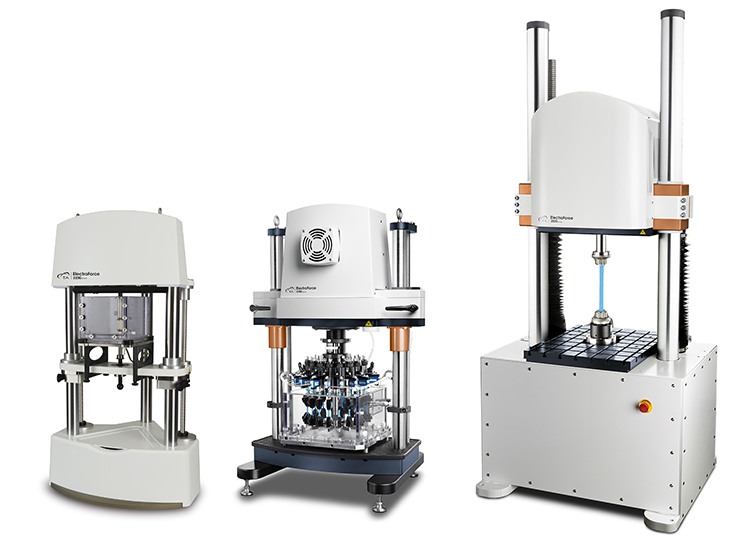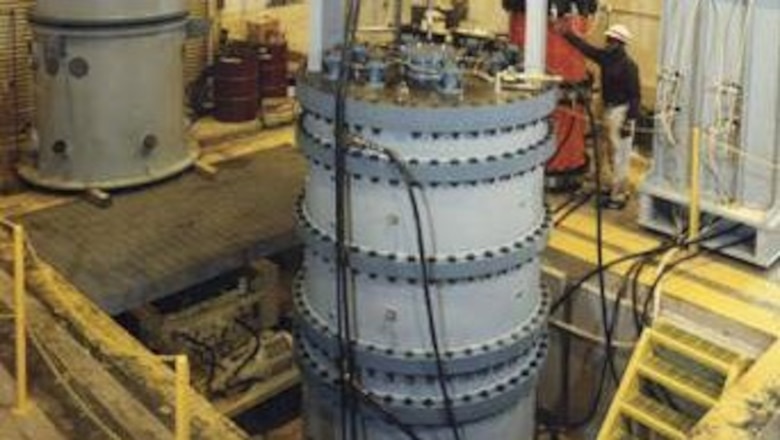Grasping Analysis: Your Materials Test Lab Authority
Wiki Article
From Principle to Fact: The Value of Products Screening in Item Development
Products screening is the organized examination and analysis of the residential properties and behavior of various materials used in item growth. By subjecting products to strenuous testing, product designers can maximize product quality, reliability, and inevitably, client fulfillment. This post explores the relevance of products screening in item advancement and highlights its significance in turning innovative ideas right into tangible, successful products.Defining Product Needs

To specify product needs precisely, comprehensive research study and evaluation are essential. The item development group must think about variables such as mechanical residential properties, chemical compatibility, cost-effectiveness, and sturdiness. They have to additionally consider any kind of governing or safety and security criteria that the item requires to meet.
Among the vital purposes in specifying product needs is to recognize products that can stand up to the expected stress and anxieties and strains the item will certainly experience throughout its lifecycle. This includes thinking about aspects such as temperature fluctuations, direct exposure to dampness or chemicals, and mechanical pressures. By choosing materials that can withstand these problems, the item's performance and durability can be optimized.
In addition, specifying material needs additionally includes considering the visual and responsive top qualities of the materials. The visual allure, appearance, and feel of the product play a substantial function in its marketability and user experience.
Performing Strength and Durability Checking
To ensure the reliability and long life of a product, conducting toughness and longevity testing is essential in the item growth procedure. This type of screening allows suppliers to recognize exactly how a product will execute under different conditions and anxiety degrees, assisting them make educated choices about layout modifications and material selections.Toughness testing entails subjecting a product to regulated forces to identify its ability to stand up to lots and pressure. This can be done through tests such as stress, compression, bending, and torsion examinations. By gauging the item's action to these pressures, engineers can analyze its structural honesty and identify any type of weak points or possible failing points.

Reviewing Chemical Make-up and Compatibility
Chemical structure and compatibility evaluation is a vital action in the product advancement procedure as it enables suppliers to assess the viability of materials for their desired applications. Recognizing the chemical make-up of a product is necessary to make sure that it meets the required needs for performance, performance, and safety.Throughout the analysis process, suppliers analyze the chemical composition of materials to identify their residential or commercial properties, such as resistance, strength, and resilience to corrosion. This information helps in selecting one of the most proper products for certain applications, as different materials may have varying chemical structures that impact their efficiency.
Compatibility evaluation is just as important, as it ensures that the products made use of in an item are compatible with each other and with any kind of various other compounds they may enter into contact with. Incompatibility can lead to chemical responses, destruction, or perhaps failure of the item.
To assess chemical compatibility, manufacturers perform examinations to assess and simulate real-world problems how different products communicate. These examinations may include direct exposure to different temperatures, stress, and chemicals. The results of these examinations assist manufacturers recognize any type of prospective problems and make educated choices about material selection and style alterations.
Assessing Safety and Efficiency Criteria
Makers need to completely evaluate safety and security and efficiency requirements to make sure the high quality and reliability of their items. Efficiency standards, on the various other hand, emphasis on assessing the product's ability to satisfy details efficiency standards and specifications. By assessing safety and security and efficiency requirements, producers can identify any possible problems or shortcomings in their items and take the needed steps to resolve them.
Making Best Use Of Product Quality and Reliability
By ensuring the thorough analysis of safety and security and efficiency criteria, makers can successfully optimize the high quality and dependability of their products. Taking full advantage of product top quality and integrity is important for services to obtain a competitive side and preserve consumer satisfaction - materials test lab. To attain this, manufacturers have to utilize rigorous screening techniques throughout the item growth processOne important facet of maximizing item quality and integrity is carrying out comprehensive products testing. This includes evaluating the homes and features of the products utilized in the manufacturing of the product. By examining the materials for variables such as longevity, resistance, and strength to environmental problems, suppliers can identify prospective weak points and make necessary renovations to improve the total top quality and integrity of the product.
Furthermore, suppliers should likewise think about making use of innovative testing methods, such as non-destructive testing over here (NDT) NDT permits the assessment of an item's honesty without creating damage, guaranteeing that the high quality and reliability of the product are not compromised during the testing process.
Furthermore, makers must continually monitor and evaluate the performance of their products in real-world conditions. This can be done with area screening and gathering feedback from customers. By gathering and evaluating data on product performance, manufacturers can identify locations click site for enhancement and make needed adjustments to enhance the quality and integrity of their items.
Final Thought
To conclude, products testing plays a critical duty in item advancement by making sure that the materials used meet the essential needs for toughness, longevity, chemical make-up, compatibility, security, and performance standards. By conducting detailed testing, manufacturers can take full advantage of the top quality and integrity of their products - materials test lab. It is necessary to focus on materials testing throughout the development procedure to guarantee the effective awareness of principles into tangible itemsMaterials screening is the systematic assessment and assessment of the homes and behavior of different products utilized in item development. By subjecting products to rigorous screening, item developers can make best use of product top quality, dependability, and inevitably, customer contentment.One of the key goals in defining material needs is to identify materials that can hold up against the anticipated anxieties go to my site and strains the product will certainly experience throughout its lifecycle. By gathering and analyzing data on item efficiency, manufacturers can determine locations for renovation and make required modifications to boost the top quality and reliability of their products.
In conclusion, products screening plays an important function in item development by guaranteeing that the products used fulfill the required needs for toughness, longevity, chemical composition, compatibility, security, and performance criteria.
Report this wiki page